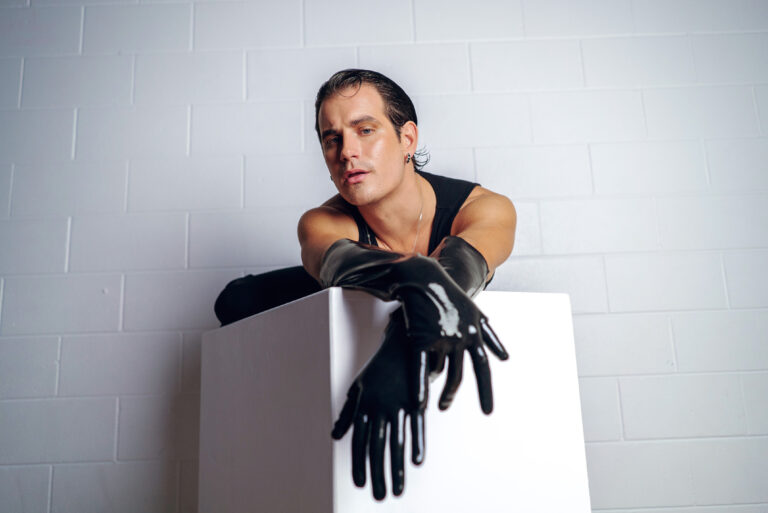Choreographers across the country started using mattresses in their own dances, after watching Kherington Payne and Stephen “tWitch” Boss in Mia Michaels’ bed routine on Season 4 of “So You Think You Can Dance.”
“Ideas always come from someplace else,” says Shely Pack-Manning, national president of Dance Masters of America and director of The Shely Pack Dancers in California. She recalls one particularly popular routine by Mia Michaels on “So You Think You Can Dance” that used a bed as a prop. “After the ‘mattress piece’ was introduced, I can’t tell you how many times I judged a competition where a mattress was dragged onto the floor,” she says. “A lot of them had a different premise and that’s fine. But what we’ve seen too many times nowadays is taking entire sections of choreography—four phrases of a 32-count, for instance—with the exact same patterns. It’s not mistakable.”
Protecting your work from being lifted is something many choreographers worry about. But what can you do to make—and keep—your work your own? We’ve compiled advice from both a professional and a legal perspective.
What to Watch For
You may be observing a group during competition or browsing around on YouTube, when you spot some moves that make you think, “Hey! That looks exactly like my dance!” But is it really?
There are ways to identify if someone has actually—by legal standards—copied your work. Julia Haye, an attorney in entertainment law and partner at Greenberg Glusker in Los Angeles, says the main question is how “substantially similar” a sequence of dance moves in one piece is to that in another dance. Social-dance steps and simple routines, she notes, are not copyrightable, and many dancemakers may be surprised to learn that music does not matter, only the composition and arrangement of movement.
“The technical moves themselves are like words for an author,” she says, and therefore are available for anyone to use. That means it would be tough to argue someone stole a jump or turn from you, because they are single moves. But, says Haye, “when you put a series of words together, they become paragraphs and therefore copyrightable. For example, everyone might be doing à la seconde turns into leaps, but are they then rolling out of that and into the same stylistic moves? It doesn’t even have to be exactly the same, it just has to be substantially similar for there to be copyright infringement.”
What Action Can You Take?
Especially in the age of social media, there are some simple ways to protect yourself from copycats. Haye observes that any work eligible for copyright protection is copyrighted once you “fix” it in a tangible way—meaning record it as a video or notate it. So it’s definitely a good idea to upload videos of your choreography to YouTube or Facebook. It establishes the date you created the work and may be used to prove you were the first to make the piece. Pack-Manning, who also cowrites plays and musicals with her husband, puts a copyright (©) symbol with her name and a date on her work as a deterrent to would-be copiers. “It lets them know it’s our original work, and we don’t want you to copy it,” she says. Haye confirms that the copyright symbol is optional (it isn’t required for copyright protection for works created after 1978), but “it is a way to put would-be infringers on notice of your rights, and that you intend to enforce them.”
You can go further and register a work with the U.S. Copyright Office, which costs $40 per piece and entitles you to certain types of damages and penalties if you choose to sue someone who has infringed on your copyright. In the end, it may not be worth the time and money to sue, but springing for official registration for particularly important routines can offer you peace of mind.
Trust the System
Whether or not you pursue legal action for potential copiers, there’s a comfort in knowing that officials keep an eye out for plagiarizing. “It affects judging, I can tell you that,” says Pack-Manning. “I look at these pieces for their own value—at technique, execution, costuming—but in the back of my mind, if I’ve seen that dance somewhere else, they’re not going to get a choreography score that’s very high.”
Additionally, there may be action you can take on site, if you spot other studios performing your work at a competition. At Dance Masters, choreographers who feel that their work has been copied can bring that to the attention of a grievance
committee. “Our advisory board will consider whether it was copied and if there should be a fine or penalty,” Pack-Manning says. “What usually happens in that situation is that particular number will not go on to championship, and it won’t be eligible for an overall top score.”
Learn to Let It Go
Though it’s essential to take precautions and to keep a sharp eye out for copiers, make sure concerns about choreography theft don’t interfere with creating and presenting your best work. “We’ve had people copy our ideas,” says teacher and choreographer Jennifer Jarnot, co-owner of the Artistic Fusion Dance Academy in Colorado and a judge for national dance competitions. “We don’t confront them because that’s not our nature, but it’s taken a long time to get to the point of saying, ‘Well, we inspired somebody, and we have to let it go.’ You can make yourself crazy becoming a detective.” She adds: “You have to be secure enough in your own work and know that you’re going to continue to create new things.” DT
Mary Ellen Hunt, a former dancer, now a teacher, writes about dance and the arts for the San Francisco Chronicle.
Keep from Being a Copycat
If you’ve been inspired by another dance, ask yourself these five questions to guard against plagiarizing someone else’s work.
1. If you’re emulating a phrase of movement, how many of the same steps are you using? How long is the phrase?
2. How many similar movement phrases from the original appear in your piece?
3. Are the transitions from one step to another unique?
4. Do you use different formations?
5. When you look objectively at your piece, do you have the sense that you are copying it, or have you given it your own personal twist? —MEH
Source: Julia Haye, entertainment lawyer
Photo courtesy of FOX


